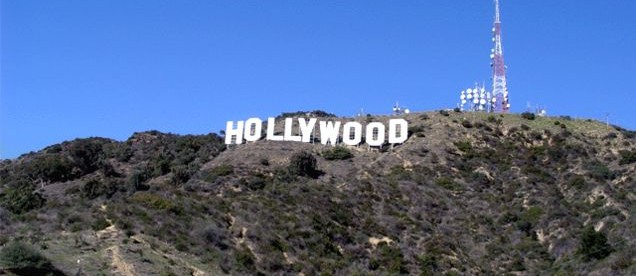The Weekender: September 16, 2016

1) “The Sedan Also Rises” (Narratively, 16 minutes, October 2015). The subhead sums it up better than I can, except to say that if this were fiction, no one would believe it, because it seems so impossibly odd: “For decades after his death, Ernest Hemingway’s iconic 1955 Chrysler New Yorker was lost somewhere in Cuba—until a determined museum director caught a lucky break, and then teamed up with the star of “Starsky and Hutch” on a mission to restore Papa’s ride.”
On the streets of Havana, a 1955 Chrysler New Yorker carried Ernest Hemingway to the long bar at the Floridita, which he called “the best bar in the world,” for daiquiris mixed strong and sour. A two-door convertible with chrome details across the gunwales and an Art Deco eagle over the hood, wings spread wide, this car ushered the Nobel laureate to the fishing boat that he sailed into the blue current, which he simply called “the stream.” It took him to the hilltop farmhouse where he lived among royal palms and mango trees most of the last twenty-two years of his life.
Then it disappeared.
For decades, Hemingway’s car survived only in legend. Was it still on the island? Had it been secreted away? Or was it lost to history, fallen into scrap metal?
[ . . . ]
When Americans and wealthy Cubans packed suitcases and fled Fidel Castro’s takeover, Hemingway stayed, and he kissed the Cuban flag as proof of his undying love for the island. Even after the American ambassador warned him to get out, Hemingway refused to leave. He meant only to take a long vacation when he boarded the ferry to Key West on July 25, 1960. But history had other plans. Cuba nationalized private property. [Hemingway took his own life shortly thereafter.]
[ . . . ]
Castro had made clear that he was fond of Hemingway’s house, and his widow Mary donated it to the Cuban government. She gave his fishing boat, the Pilar, to Hemingway’s longtime first mate, Gregorio Fuentes. The Chrysler New Yorker went to José Luis Herrera Sotolongo, Hemingway’s doctor and friend. Nicknamed “El Feo” (the ugly one), he was a Spaniard who served as surgeon on the Republican side during the Spanish Civil War and fled to Cuba to escape the Franco regime.
In the 1970s the doctor passed the Chrysler down to his son. From there, it changed hands again, and again, and again. With each new owner, the car’s connection to Hemingway dimmed. The Chrysler disappeared into Castro’s automotive jungle, where it might have been sold for scrap, chopped for spare parts, or simply pushed, rusting, onto a junk heap. It would have stayed lost forever, had Ada Rosa Alfonso not resumed the search.
2) Sponsored: Get Matched With The Perfect Wine: Winc is upgrading the way you discover & buy wine. They are eliminating the guesswork by matching you with personalized wine recommendations. Answer six simple questions about what you like to eat and drink and Winc will match you up with wine you are guaranteed to love. Take the quiz and get $20 off your first order of wine!
(Really, this is a pretty great offer. They sent me four bottles for free, which I shared with some friends — my friends, who drink more wine than I do, all were pretty impressed. Assuming I did the math right: If you buy the minimum three bottles, you can get three for about $32 with the discount but have to pay for shipping. If you buy four, shipping is free and it comes out to about $36.)
3) “The Millennial Whoop: A glorious obsession with the melodic alternation between the fifth and the third” (The Patterning, 6 minutes plus tons of videos, August 2016). If you wanted a click-bait title for this one, it’d be “All of the songs you listen to sound the same, and here’s proof!” Unfortunately, you’ll have to take my word for it — it’s hard to play music in emails. Or, you can check out the video that Quartz put together — a compilation of some Whoop-ing songs, with a bit of explanation. They shared it on Facebook; I’ve re-shared it on the rarely-used Now I Know Facebook page. It’s only about two minutes, so it’s short — but make sure you have your sound on. And then go read the article.
4) “The Celebrity Surgeon Who Used Love, Money, and the Pope to Scam an NBC News Producer” (Vanity Fair, 25 minutes, January 2016). This thing defies explanation. For those on their way toward marriage: if your fiancee tells you that the Pope is officiating at your wedding; that Vladimir Putin and the Obamas have RSVPed in the affirmative; and Andrea Bocelli is going to perform, well, that sounds too good to be true — because it is too good to be true.
WeekenderAdUnits
5) “Why People Keep Trying to Erase the Hollywood Sign From Google Maps” (Gizmodo, 11 minutes, November 2014). You know the sign. But if you’re in LA, locals don’t want you going up on the hill to see it close up. So, they’re trying to keep you away by keeping it off the maps.
The Hollywood Sign might be one of the most recognizable things on Earth. In Los Angeles, it’s also one of the most visible. You can see it from a plane as you glide into LAX. You can see it from a car as you drive up the 101 freeway. But a group of people who live near the sign are trying to hide it, even as it looms in the hills, in plain sight. By removing it from Google Maps.
Why hide the Hollywood Sign? It begins with the story of the Hollywood locals vs. the Hollywood tourists. For decades, the people who live below the sign have been battling the constant wave of sightseers who flock to see the nine giant letters as part of an Essential Los Angeles Pilgrimage. Signs (some illegal) have been erected on streets, warning that there is “No access to the Hollywood Sign.”
But in the last few years, technology has amplified this battle into an all-out war. Since they can’t physically block the streets to stop cars from arriving, residents have spent years working on the next best solution: Make the sign invisible online—so no one can find it.
Have a great weekend!

